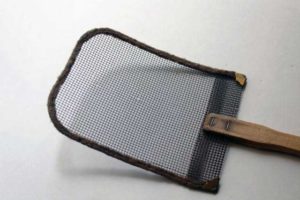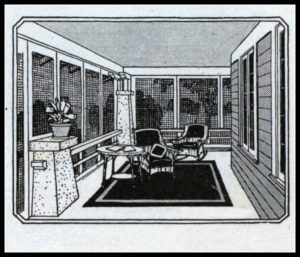Small Home Gazette, Summer 2021
History Brief: Air In, Bugs Out
Horsehair wovens and cheesecloth were the first materials used to keep out insects while allowing air to circulate. Then came wire cloth, woven of fine metal wire and first used for sieves for food processing.
Gilbert and Bennett, a Connecticut sieve-making company, is credited with the invention of the modern window screen. Having lost their Southern customers during the Civil War, they had a surplus of wire cloth. An employee proposed painting the cloth gray to prevent rust and selling it for window screen material. The product became popular quickly. Eventually, rust-resistant steel wire was introduced.
 By 1900, metal screen material (sold by the yard in catalogs) as well as window screens were available throughout the U.S. With the early 1900s campaign against flies and other insects, believing they spread disease from malaria to pink eye, residential screens were in demand. A common Boy Scout project, screen material was nailed to simple wooden frames and installed. The smaller patches of leftover screen were attached to the end of a stick—the fly swatter!
By 1900, metal screen material (sold by the yard in catalogs) as well as window screens were available throughout the U.S. With the early 1900s campaign against flies and other insects, believing they spread disease from malaria to pink eye, residential screens were in demand. A common Boy Scout project, screen material was nailed to simple wooden frames and installed. The smaller patches of leftover screen were attached to the end of a stick—the fly swatter!












